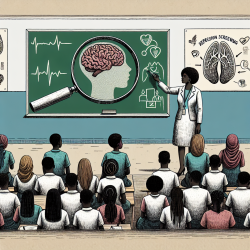Introduction
In the realm of speech-language pathology and rehabilitation, the quest for effective models of care is ever-evolving. The research article titled "An inpatient rehabilitation model of care targeting patients with cognitive impairment" presents a groundbreaking approach that holds promise for transforming rehabilitation outcomes, particularly for children with cognitive impairments. This blog post delves into the key findings of the study and explores how practitioners can implement these insights to enhance their practice and create better outcomes for children.
Understanding the Patient-Centred Rehabilitation Model (PCRM-CI)
The Patient-Centred Rehabilitation Model for Cognitive Impairment (PCRM-CI) is a comprehensive approach designed to address the unique challenges faced by individuals with cognitive impairments. Originally developed for patients with hip fractures and cognitive impairments, the model integrates rehabilitation management, dementia management, delirium prevention and management, staff education, and family support. The model's core principles are rooted in the REAP framework, which emphasizes Relating well, Environmental manipulation, Abilities-focused care, and Personhood.
Key Components of PCRM-CI
- Rehabilitation Management: Involves interdisciplinary treatments, goal setting, and continuous assessments to improve mobility and function.
- Dementia and Delirium Management: Focuses on reducing agitation and complications through targeted assessments and interventions.
- Staff Education and Support: Provides comprehensive training to enhance the skills and knowledge of healthcare providers.
- Family Support: Engages families in the rehabilitation process, providing them with education and resources to support their loved ones.
Implementing PCRM-CI in Pediatric Settings
While the PCRM-CI model was initially designed for adults, its principles can be adapted to pediatric rehabilitation settings. Here's how practitioners can leverage this model to improve outcomes for children with cognitive impairments:
- Interdisciplinary Collaboration: Foster a team-based approach involving speech-language pathologists, occupational therapists, physical therapists, and educators to address the diverse needs of children.
- Customized Goal Setting: Work with families to set personalized rehabilitation goals that align with the child's abilities and aspirations.
- Environmental Adaptations: Modify the child's environment to support their cognitive and physical needs, promoting independence and engagement.
- Family Education: Equip families with the knowledge and tools to support their child's progress at home and in the community.
Encouraging Further Research
The PCRM-CI model underscores the importance of data-driven decision-making in rehabilitation. Practitioners are encouraged to engage in further research to explore the model's applicability to pediatric populations. By participating in studies and sharing insights, practitioners can contribute to the development of evidence-based practices that enhance the lives of children with cognitive impairments.
Conclusion
The Patient-Centred Rehabilitation Model for Cognitive Impairment offers a promising framework for improving rehabilitation outcomes. By adapting its principles to pediatric settings, practitioners can empower children with cognitive impairments to achieve greater mobility, independence, and quality of life. To delve deeper into the original research and gain a comprehensive understanding of the PCRM-CI model, please follow this link: An inpatient rehabilitation model of care targeting patients with cognitive impairment.










